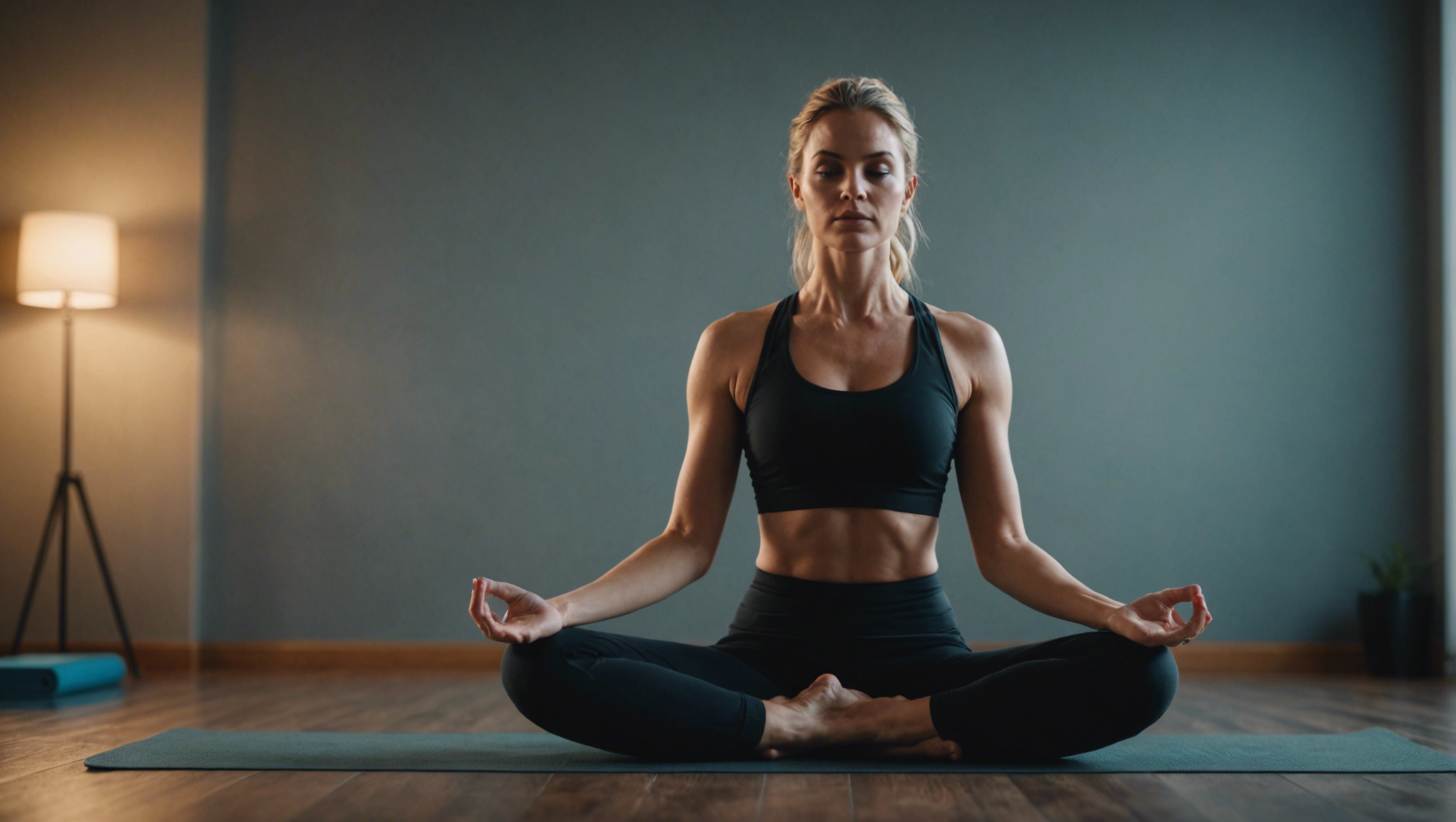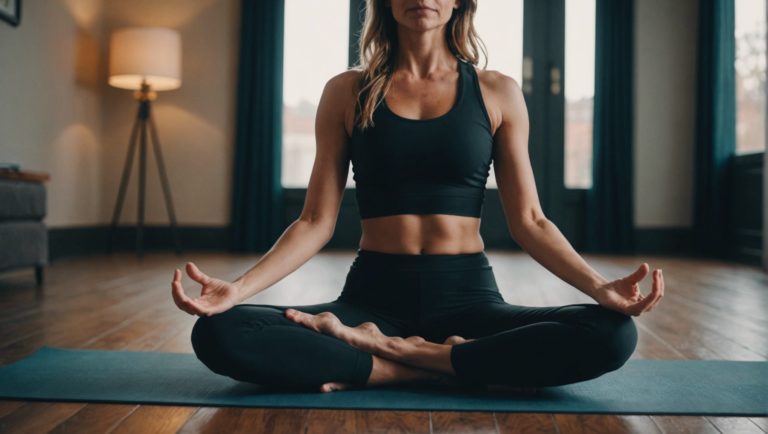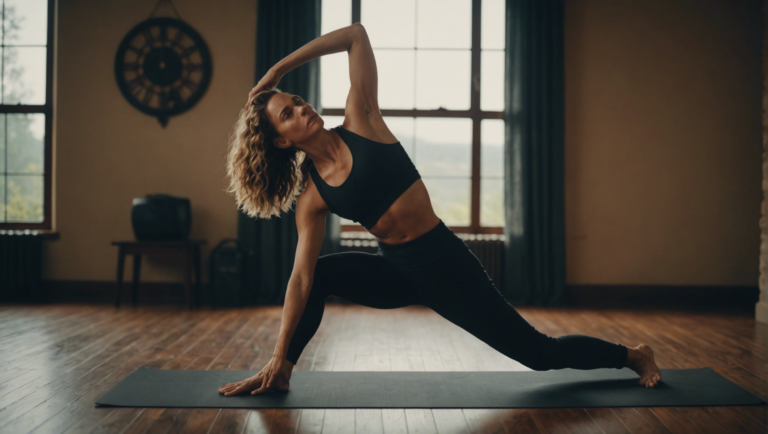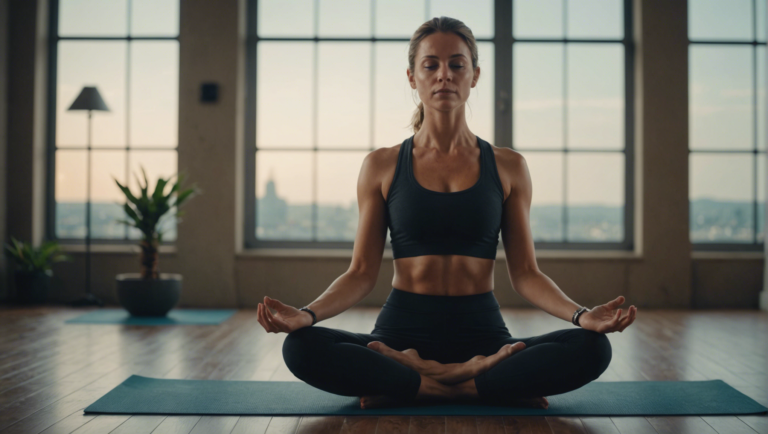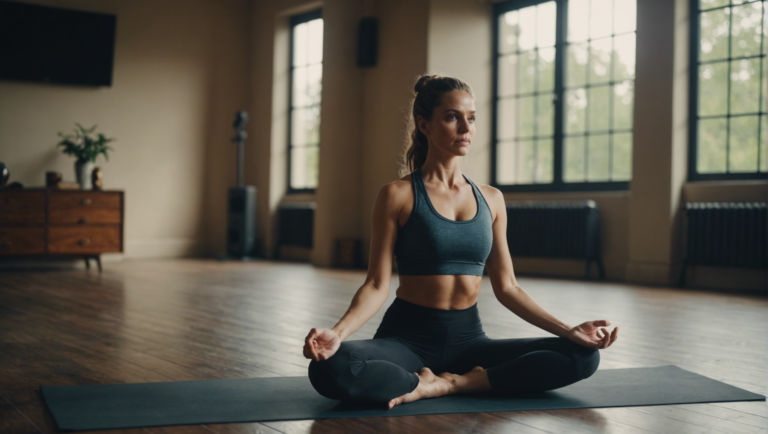Optimal Number Of Yoga Poses To Perform In Each Session
Determining the Optimal Number of Yoga Poses for Enhanced Flexibility and Strength
Embarking on a journey to enhance flexibility and strength through yoga invites a deep exploration into the realms of personal practice and holistic health. The quest for the perfect number of yoga poses within a session is akin to uncovering a personalized roadmap to well-being, a balancing act that harmonizes intensity with tranquility, effort with ease.
Crafting Your Yoga Practice for Flexibility
A broad spectrum of yoga poses, each with its unique benefits and challenges, offers a rich palette from which to draw when designing a session aimed at boosting flexibility. The key is to identify poses that stretch various muscle groups, promoting elasticity and suppleness throughout the body. A sequence that includes forward bends, such as Paschimottanasana (Seated Forward Bend), alongside hip openers like Pigeon Pose, and twists such as Ardha Matsyendrasana (Half Lord of the Fishes Pose), can significantly enhance flexibility when practiced consistently.
Tailoring the sequence to start with simpler poses and gradually progress to more advanced stretches ensures a safe and effective practice. Typically, incorporating 8-10 poses focused on flexibility, held for 1-2 minutes each, allows sufficient time for the muscles to relax and deepen into the stretch, facilitating a more profound release.
Structuring Sessions for Strength Building
In contrast, cultivating strength through yoga requires a distinct approach, integrating poses that activate and engage the core, arms, legs, and back. Asanas such as Plank Pose, Chaturanga Dandasana (Four-Limbed Staff Pose), and Virabhadrasana II (Warrior II Pose) are cornerstones of a strength-focused yoga practice. These poses not only build muscular strength but also enhance endurance and stability.
A balanced session for strength might comprise 6-8 weight-bearing poses, each held for 30 seconds to a minute. This duration challenges the muscles, fostering growth and resilience. Introducing dynamic movements, like transitioning between poses in a flow or adding variations to static poses, can amplify the strength-building effects.
Balancing Flexibility and Strength in Your Practice
The alchemy of yoga lies in its ability to blend flexibility and strength, each quality enhancing the other. A well-rounded practice marries the two, alternating between poses that stretch and poses that strengthen. This creates a holistic session that nurtures the body equally on both fronts. Aim for a session that integrates an equitable mix of 12-16 poses, allocating equal time and effort to both stretching and strengthening exercises.
The sequencing is crucial for a balanced practice; beginning with a gentle warm-up, moving into strength-building poses while the muscles are most capable, and concluding with flexibility-focused poses to cool down and deepen the stretches when the body is fully warmed up. This structure ensures a comprehensive workout that addresses all aspects of physical wellness.
Personalization: The Key to an Optimal Practice
While guidelines provide a foundation, the optimal number of yoga poses in a session is profoundly personal, influenced by individual goals, experience, and how the body feels on any given day. Listening to one’s body and adjusting accordingly is paramount. This might mean reducing the number of poses to focus more deeply on a few key areas or expanding the practice to explore a wider array of asanas as strength and flexibility grow.
Yoga is a journey of self-discovery and personal growth. The exact number of poses that constitutes an "optimal" session varies widely among practitioners. What remains constant, however, is the emphasis on balance, mindfulness, and the pursuit of a practice that feels holistic and fulfilling. Regularly revisiting and revising one’s practice with these goals in mind ensures ongoing progress and deepened understanding of the profound benefits yoga offers for flexibility and strength alike.
Embracing yoga’s dual focus on flexibility and strength with a personalized approach not only maximizes physical benefits but also fosters a deeper connection to the self, underscoring yoga’s role as a comprehensive pathway to wellness.
The Role of Individual Fitness Levels in Tailoring Yoga Sessions
Yoga, an ancient practice with roots extending back thousands of years, offers a holistic approach to well-being, blending physical postures, breathing exercises, and meditation. Its adaptability to various fitness levels makes it an inclusive practice. However, understanding and respecting the role of individual fitness levels in tailoring yoga sessions is paramount for maximizing benefits while minimizing risks.
Customizing Yoga Practices to Match Fitness Levels
The journey into yoga begins with acknowledging where we are on our fitness journey and recognizing that yoga is not a one-size-fits-all practice. Beginners may find advanced poses daunting and potentially harmful, while seasoned practitioners might seek more challenging poses to deepen their practice. Therefore, assessing one’s physical condition, strength, flexibility, and overall health becomes the first step in customizing a yoga routine that is both beneficial and safe.
Recognizing the Importance of Gradual Progression
Gradual progression is a key principle in yoga, as in any form of physical exercise. Starting with foundational poses and gradually introducing more complex postures ensures a safe practice. It allows the body to adjust and develop the necessary strength and flexibility over time. Moreover, understanding one’s current limitations and gradually pushing these boundaries can lead to more significant improvements and prevent injuries.
Integrating Modifications and Props
Yoga’s versatility lies in its adaptability. Props such as blocks, straps, and bolsters can help modify poses to suit different fitness levels, making yoga accessible to everyone. Modifications allow individuals to experience the essence of a pose without compromising their safety or alignment. For example, someone with limited flexibility can use a strap to hold a leg in a stretch they otherwise could not reach, gradually increasing flexibility over time.
Listening to Your Body: The Ultimate Guide
One of the most valuable lessons yoga teaches is to listen to your own body. This internal guidance system helps practitioners discern between a beneficial stretch and potential strain. Encouraging practitioners to stay attuned to their body’s signals and adjust their practice accordingly is vital for a fulfilling and injury-free yoga experience.
The Role of Breathwork and Meditation in Tailoring Practices
Yoga is not solely about physical postures; breathwork and meditation are equally integral components. These aspects can be tailored to individual fitness levels and needs, offering profound benefits such as stress reduction, improved concentration, and enhanced respiratory efficiency. For instance, someone with high physical fitness but high stress might find more value in focusing on breathwork and meditation to balance their practice.
Leveraging Expert Guidance for Customized Yoga Sessions
While self-guided practice has its merits, working with a knowledgeable yoga instructor can significantly enhance the customization process. Instructors can offer personalized adjustments, recommend specific poses to meet fitness goals, and provide feedback on form and technique. This expert guidance can be invaluable, especially for beginners or those with specific health concerns.
Yoga’s adaptability makes it a unique and powerful tool for personal development and wellness. By acknowledging and respecting individual fitness levels, practitioners can tailor their yoga sessions to fit their specific needs, ensuring a safe, rewarding, and personalized yoga journey. Whether through modifying poses, integrating props, or focusing on breathwork and meditation, each individual can forge a distinctive path through yoga, reaping its myriad benefits while honoring the body’s current state. Engaging in this mindful practice with awareness and care opens the door to lifelong health, balance, and wellbeing.
The Impact of Yoga Pose Varieties on Mental Health and Stress Reduction
Exploring the Connection Between Yoga Poses and Mental Well-being
The intricate dance between the mind and body is nowhere more evident than in the practice of yoga. This ancient discipline, rooted in thousands of years of tradition, has swept across the globe, offering solace and sanctuary to those who embark on its path. At the heart of this practice are the poses or "asanas," each with its unique physical and mental benefits. The variety of yoga poses not only enhances physical flexibility and strength but also plays a pivotal role in mental health and stress reduction.
The Psychological Benefits of Diverse Yoga Poses
Yoga is not just an exercise; it’s a holistic experience that integrates mind, body, and soul. The diversity of yoga poses ensures that practitioners can engage in a personalized practice tailored to their unique mental and physical needs. From the grounding effects of Tadasana (Mountain Pose) to the invigorating impact of Urdhva Mukha Svanasana (Upward Facing Dog), each asana carries psychological benefits crucial for combating stress and enhancing mental well-being.
Studies suggest that engaging in a variety of yoga poses can significantly reduce stress hormones in the body, notably cortisol, thus facilitating a state of relaxation and calmness. Moreover, the practice of fluid movements from one pose to another enhances mindfulness, compelling practitioners to live in the moment, a known buffer against the stresses of daily life.
Enhancing Emotional Resilience Through Yoga Practice
A consistent yoga practice that incorporates a range of poses is shown to foster emotional resilience. As individuals learn to navigate their physical boundaries on the mat, they also learn to recognize and manage their emotional and mental boundaries off the mat. This awareness develops an inner strength that is pivotal in facing life’s inevitable challenges with grace and equanimity.
The breath work (pranayama) combined with diverse yoga poses deeply influences the nervous system, shifting it from the sympathetic "fight or flight" response to the parasympathetic "rest and digest" state. This physiological shift is instrumental in reducing anxiety levels, promoting a sense of peace and improved mental health outcomes.
The Role of Yoga in Alleviating Depression and Enhancing Cognitive Function
Yoga’s variety of poses, when practiced regularly, can be a potent tool in alleviating symptoms of depression. The mindful breathing and concentration required to execute and hold poses can lead to a significant decrease in depressive symptoms by increasing the levels of serotonin, a neurotransmitter often referred to as the "feel-good" hormone.
Furthermore, yoga has been associated with enhanced cognitive function, including improved concentration, memory, and attention span. This is particularly advantageous in our fast-paced world, where mental clarity can often be clouded by multitasking and incessant digital stimulation.
Tailoring Yoga Practices to Individual Mental Health Needs
Personalizing one’s yoga practice by selecting poses that address specific mental health concerns can optimize the therapeutic benefits of yoga. For instance, poses that require balance and concentration, such as Vrksasana (Tree Pose), can help center the mind, reducing feelings of anxiety. Conversely, invigorating poses like Virabhadrasana (Warrior Pose) can boost energy levels and improve mood, combating feelings of lethargy often associated with depression.
A well-rounded yoga practice should include a balance of calming and energizing poses, providing a comprehensive approach to mental health and stress management. By almost prescribing certain asanas to combat specific psychological states, practitioners can unlock the true potential of yoga as a form of mental health therapy.
Fostering a Mindful Approach to Yoga
The ultimate goal of integrating a variety of yoga poses into one’s practice should not be merely physical fitness but rather a deeper connection with oneself. By approaching yoga with mindfulness and intention, practitioners can achieve a state of mental clarity and tranquility that transcends the yoga mat.
Yoga offers a sanctuary from the chaos of everyday life, a place where the mind can rest, rejuvenated by the diverse tapestry of poses. In this way, yoga acts not just as a physical exercise, but as a profound journey toward mental wellness and resilience.
Incorporating Yoga into Daily Routines: Strategies for Busy Lifestyles
Finding time for yoga amidst a bustling schedule may seem like trying to solve a perplexing puzzle. Yet, the flexibility of yoga as a practice—ranging from intense sessions to brief stretches—makes it uniquely suited for integration into our daily lives, especially for those who cannot afford lengthy periods of time. Strategic approaches enable us to weave yoga seamlessly into the fabric of our busy lives, turning potentially daunting challenges into manageable and enjoyable routines.
Crafting a Personal Yoga Plan: Tailoring Practice to Fit Your Schedule
The first step in reconciling a hectic lifestyle with the discipline of yoga is understanding that the quality of practice often outweighs quantity. Yoga is not merely a physical exercise; it is a holistic approach to bettering one’s health and wellness, encompassing physical postures, breath control, and meditation. A tailored yoga plan considers personal goals, preferences, and, critically, time constraints.
Individuals can start by identifying pockets of time within their daily routine that are less occupied or could be better utilized. Even 10 to 15 minutes spared for a quick session in the morning, during lunch breaks, or before bed can accumulate significant benefits over time. The key is consistency rather than duration; regular short sessions can be as effective as longer ones less frequently.
Selection of Yoga Poses: Maximizing Impact in Minimal Time
When time is of the essence, selecting the right poses (asanas) becomes crucial. Focus on asanas that offer the most benefits for your specific needs—be it stress relief, flexibility, strength, or mindfulness. For instance, a sequence might include:
- Sun Salutations (Surya Namaskar): A comprehensive exercise that warms up the body, stretches and tones the muscles, and boosts energy.
- Standing Poses: Such as Warrior I and II, which build strength, focus, and balance.
- Seated Stretches: Like Forward Bend (Paschimottanasana) for calming the mind and stretching the spine.
- Inversion Poses: Like Downward-Facing Dog, which refreshes the brain and enhances circulation.
- A Short Meditation or Pranayama: To conclude the session, focusing on breath work or mindfulness to enhance emotional well-being.
Integrating Yoga with Daily Activities
Given the adaptable nature of yoga, there are innovative ways to incorporate it into daily tasks and routines:
- Chair Yoga: Ideal for office workers or individuals spending much time seated. It involves stretches and poses that can be done from the comfort of a chair, mitigating the strain of sitting for long periods.
- Yoga Breaks: Substituting traditional coffee breaks with brief yoga stretches or breathing exercises to rejuvenate the mind and body.
- Active Commuting: For those who walk or cycle to work, incorporating yoga stretches before and after the commute can enhance flexibility and reduce muscle tension.
Utilizing Digital Resources for Guidance and Inspiration
The digital age has made practicing yoga more accessible than ever. Countless apps, online tutorials, and virtual classes offer guidance tailored to all levels and time frames. These resources can serve as an invaluable tool for those seeking to maintain their practice amidst a busy schedule, providing the flexibility to engage in yoga anytime and anywhere.
Making Yoga a Non-Negotiable Part of Your Day
The ultimate strategy lies in shifting one’s mindset to view yoga not as a task but as a non-negotiable part of daily well-being. This perspective change fosters a commitment to practice, integrating it as a fundamental aspect of one’s lifestyle. Over time, even the busiest individuals may find that yoga becomes an indispensable and treasured part of their daily routine, contributing to enhanced health, focus, and overall quality of life.
Strategies for balancing yoga with a demanding schedule not only make the practice more attainable but also enhance its benefits, proving that even the busiest lives can accommodate the peaceful and invigorating presence of yoga.
Advanced Yoga Practices: Balancing Quantity and Quality of Poses for Experienced Practitioners
Balancing Quantity and Quality in Advanced Yoga Sessions
For experienced yoga practitioners, the evolution of their practice often spirals into a dilemma of quantity versus quality. The artistry of a yoga session lies not in the sheer number of poses performed but in the depth and intentionality with which each posture is engaged. This exploration delves into strategies for advanced practitioners to refine their practice, marrying the optimal number of poses with the quality of execution for a transformative experience.
Navigating the Path to Mastery in Yoga
A nuanced understanding of one’s body and the subtle energies at play becomes crucial as one ventures deeper into the realms of advanced yoga. Mastery is a journey of continuous learning where the emphasis shifts from doing more to being more within each posture. Advanced practitioners are encouraged to cultivate a keen awareness of their physical and energetic alignment, exploring the infinitesimal adjustments that unlock the full potential of each asana.
Quality Over Quantity: A Paradigm Shift
The hallmark of an advanced practice is the ability to imbue each movement with mindful awareness and precision. This means sometimes fewer poses are performed in a session, allowing for extended periods of exploration and integration within each posture. The focus is on achieving a deeper state of consciousness and connection, where the breath guides the flow, and the body and mind unite in a harmonious dance of presence.
The Optimal Number of Poses: An Individualized Approach
Determining the optimal number of poses in a session is highly individualized, influenced by factors such as one’s physical condition, energy levels, and practice goals. There is no one-size-fits-all answer, but advanced practitioners should aim for a balanced routine that challenges them without leading to exhaustion or injury. A session could consist of as few as five to six carefully chosen poses, each held for several minutes with full awareness, or a more dynamic sequence of up to twelve to fifteen poses where the focus is on fluid transitions and the cultivation of inner strength.
Embracing the Full Spectrum of Yoga Practices
Advanced yoga transcends the physical asanas, embracing a holistic approach that includes pranayama (breath control), meditation, and the study of yoga philosophy. These elements are integral to deepening one’s practice, providing a framework for internal transformation and the realization of yoga’s ultimate goal: the union of body, mind, and spirit. Integrating these practices allows for a more comprehensive experience, fostering a state of balance and equanimity that pervades all aspects of life.
Listening to the Body: The Ultimate Guide
The most adept yoga practitioners understand that the body has its wisdom, constantly communicating its needs and limitations. Honoring this innate intelligence is essential for a practice that is both safe and sustainable. This means being flexible with one’s routine, adjusting the number and intensity of poses according to the body’s signals, and recognizing when to push forward and when to pull back.
: The Journey is the Destination
In advanced yoga practices, the journey towards balancing quantity and quality of poses becomes a mirror for life itself, reflecting back the importance of being fully present and engaged in every moment. It is a reminder that true mastery lies in the depth of one’s experience rather than the breadth of one’s achievements. By listening to their bodies, embracing a holistic approach, and focusing on the quality of each posture, experienced practitioners can transcend the physical dimensions of yoga, embarking on a path of continuous growth and self-discovery.
This exploration serves as a beacon for those navigating the nuanced terrains of advanced yoga, illuminating the path towards a practice that is both deeply fulfilling and profoundly transformative.
Conclusion
Determining the ideal balance and number of yoga poses within a practice session is an intricate process, deeply influenced by personal objectives, physical capabilities, and the quest for mental serenity. At the heart of this exploration is the acknowledgment that yoga, in its essence, is a personal journey that intricately connects the body, mind, and spirit, thus transcendently influencing one’s flexibility, strength, mental health, and overall lifestyle.
The journey to enhanced flexibility and strength through yoga requires a thoughtful selection of poses that challenge the body while ensuring safety and gradual progress. This delicate balance is not about adhering to a rigid number but about recognizing the body’s signals and respecting its limits. The dynamic nature of individual fitness levels necessitates a customized approach to yoga practice, making it evident that what works for one individual may not suit another. This personalization is not just beneficial; it’s essential for fostering growth, avoiding injury, and enhancing bodily awareness.
Moreover, yoga’s profound impact on mental health can’t be overlooked. The variety of poses and their sequences play a pivotal role in mitigating stress and nurturing mental tranquility. poses that range from stimulating to restorative encourages a holistic engagement with one’s mental landscape, offering a refuge from the stresses of daily life. The diversification of poses not only enriches the physical practice but also deepens the mental and emotional experiences, leading to a more resilient and balanced state of being.
Yoga into daily routines presents a unique set of challenges, especially for those navigating the demands of a busy lifestyle. However, the integration of yoga into daily life is less about the quantity of time spent on the mat and more about the quality and consistency of practice. Even short sessions, when executed with intention and focus, can yield significant benefits. For individuals juggling multiple responsibilities, the emphasis should be on creating a sustainable practice that adapts to their evolving schedules without compromising their connection to yoga.
Advanced practitioners face the distinct challenge of balancing the quantity and quality of poses to continue their growth without plateauing. For them, the journey involves a deeper exploration of advanced poses and sequences while maintaining a keen focus on alignment, breath, and the subtle nuances of each movement. This advanced practice is a testament to the idea that progress in yoga is not linear but cyclical, where revisiting fundamentals with a deeper understanding can lead to profound insights and physical advancements.
Ultimately, the optimal number of yoga poses in a session is a fluid concept, reflective of an individual’s journey with yoga. It underscores the idea that yoga is not merely a physical practice but a holistic discipline that nurtures the body, calms the mind, and enriches the spirit. As practitioners navigate through their yoga journey, the focus should remain on listening to their bodies, being mindful of their mental state, and aligning their practice with their life’s rhythms and demands.
The integration of yoga into one’s life is as much an act of self-discovery as it is a form of exercise. It invites an ongoing dialogue between the practitioner and their practice, encouraging adjustments, experimentation, and reflection. Whether one is a beginner finding their footing or an experienced yogi pushing the boundaries of their practice, the essence of yoga remains the same: a path to uncovering a more flexible, strong, and tranquil version of oneself. Through this lens, the question of the optimal number of poses becomes less about reaching a definitive number and more about fostering a practice that resonates with one’s individual needs, goals, and journey.
